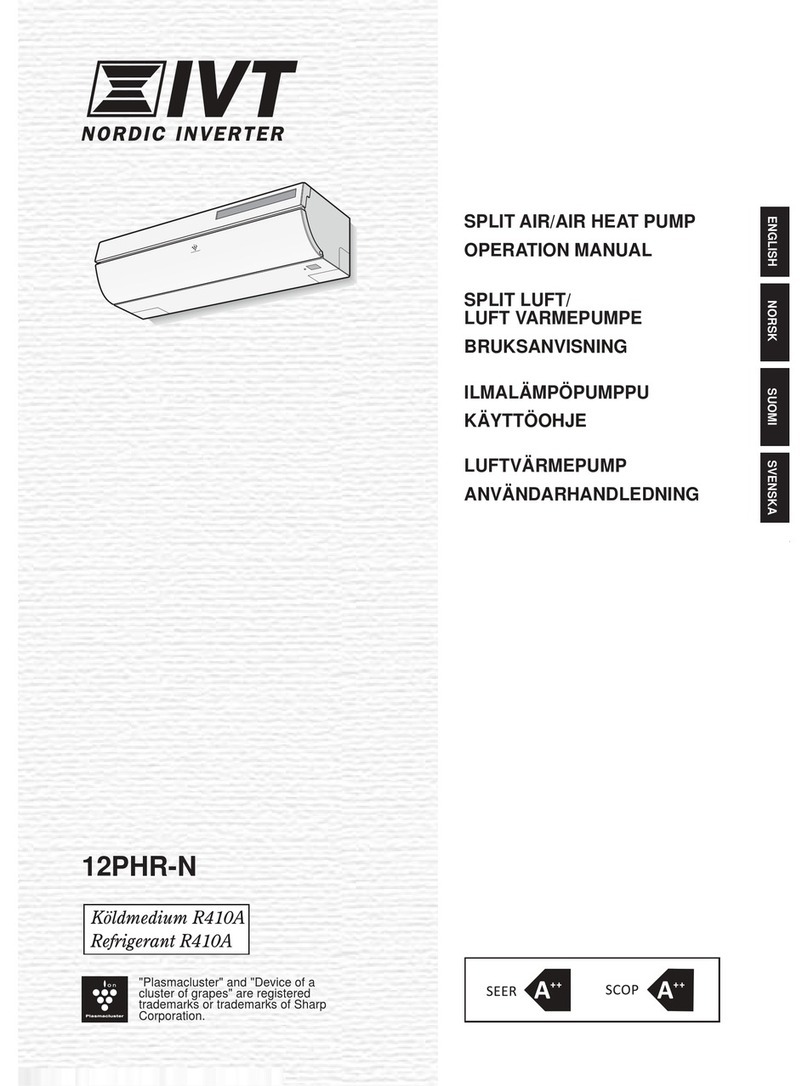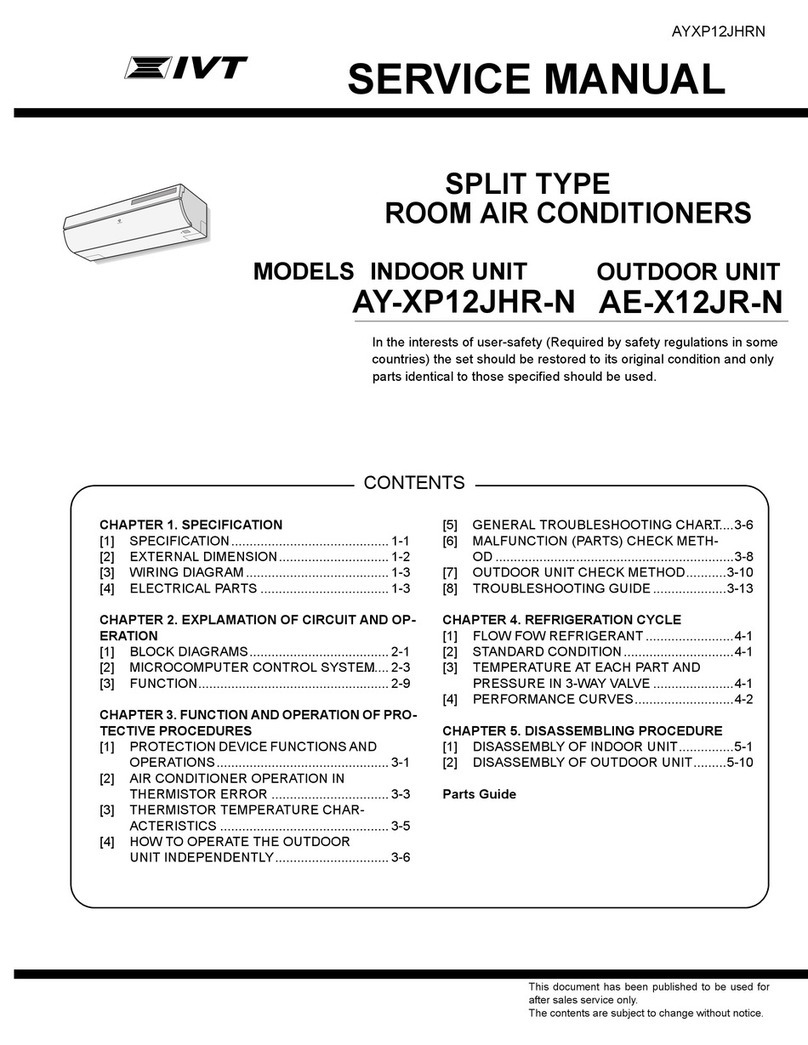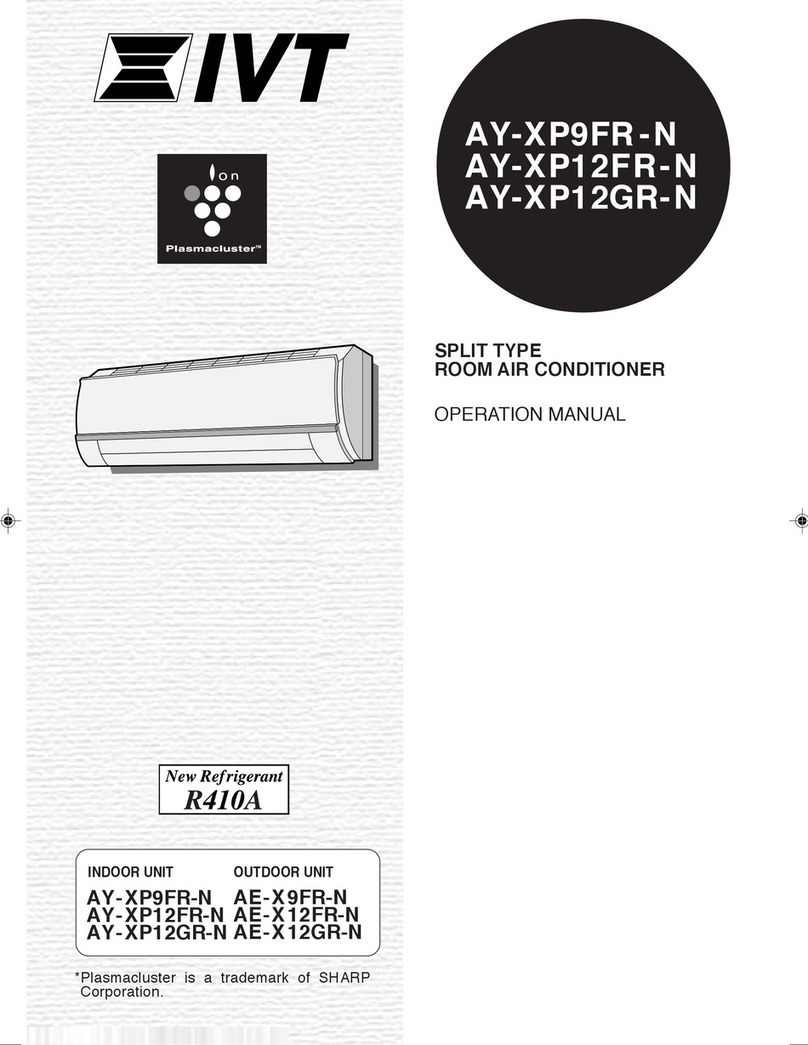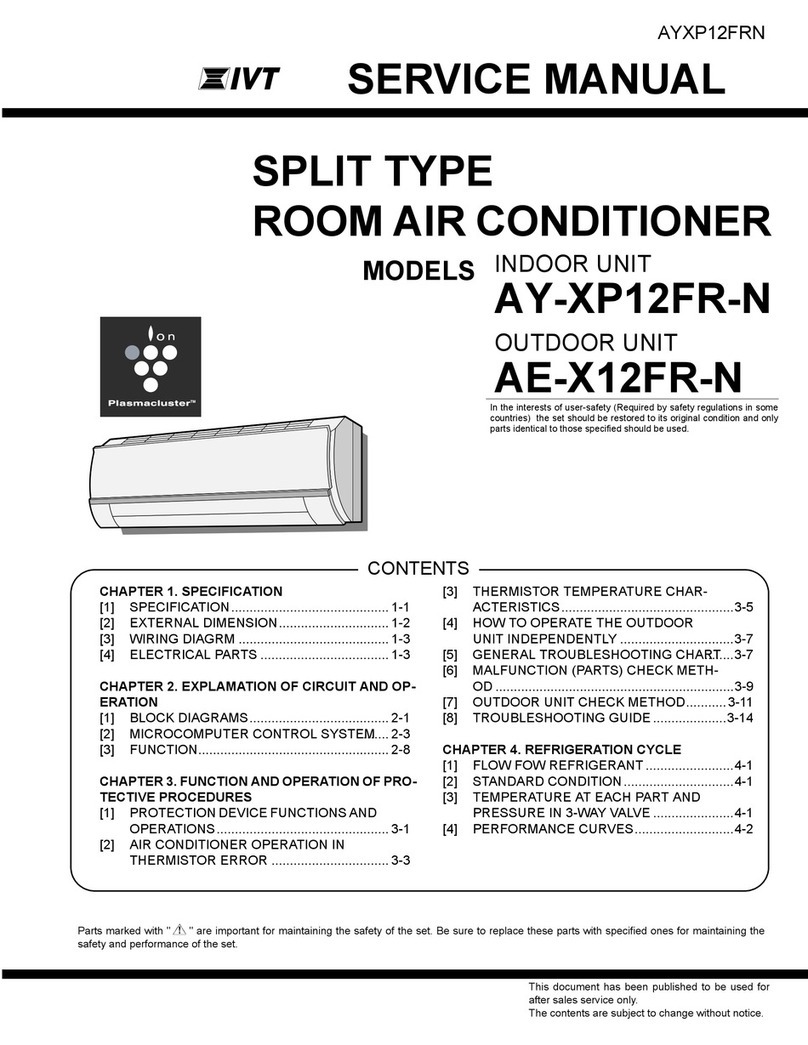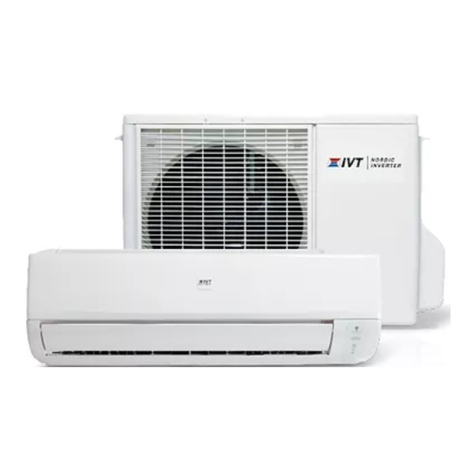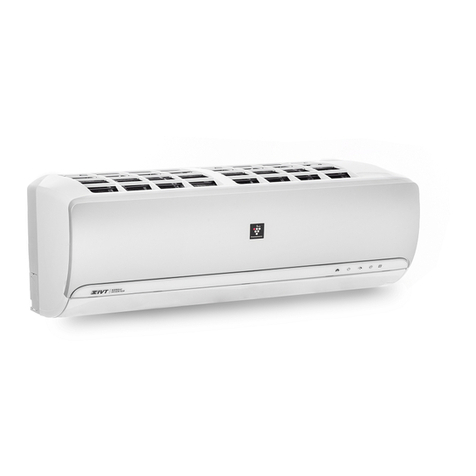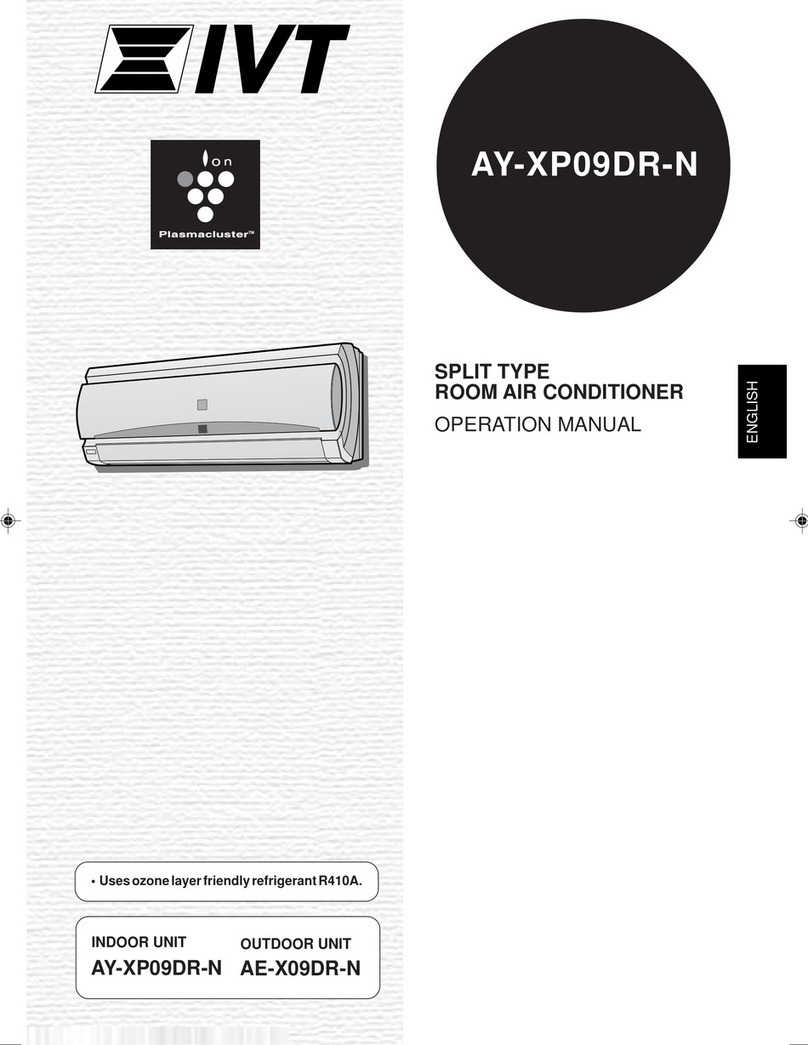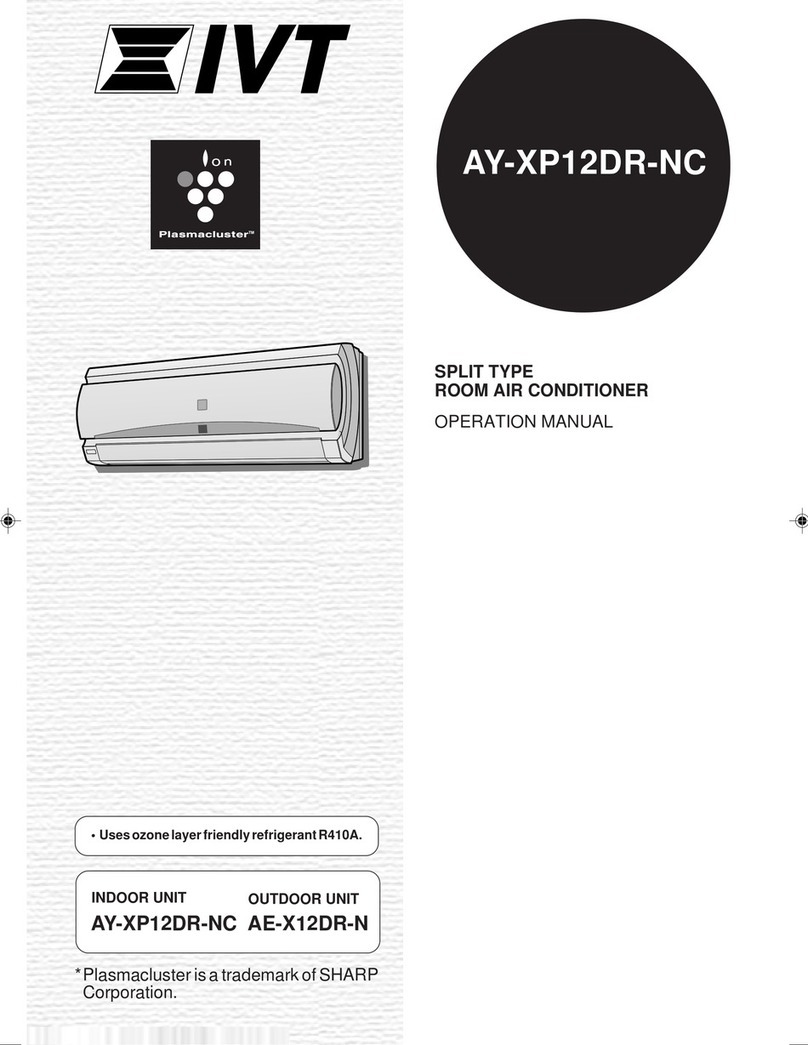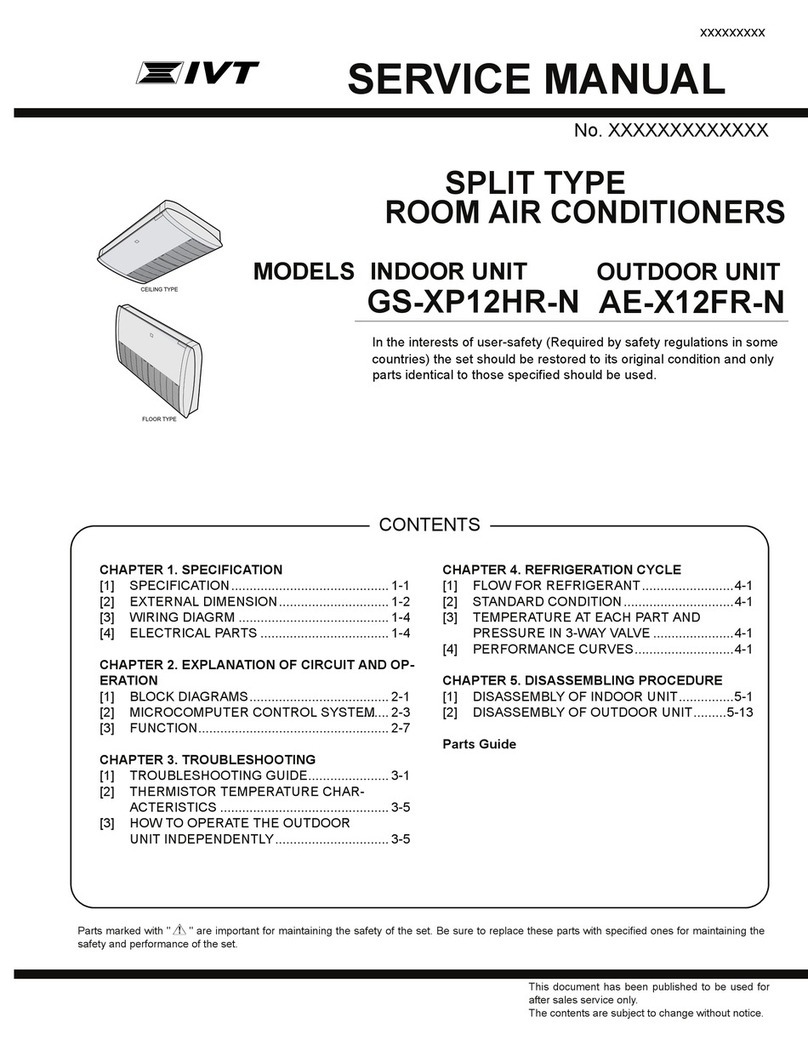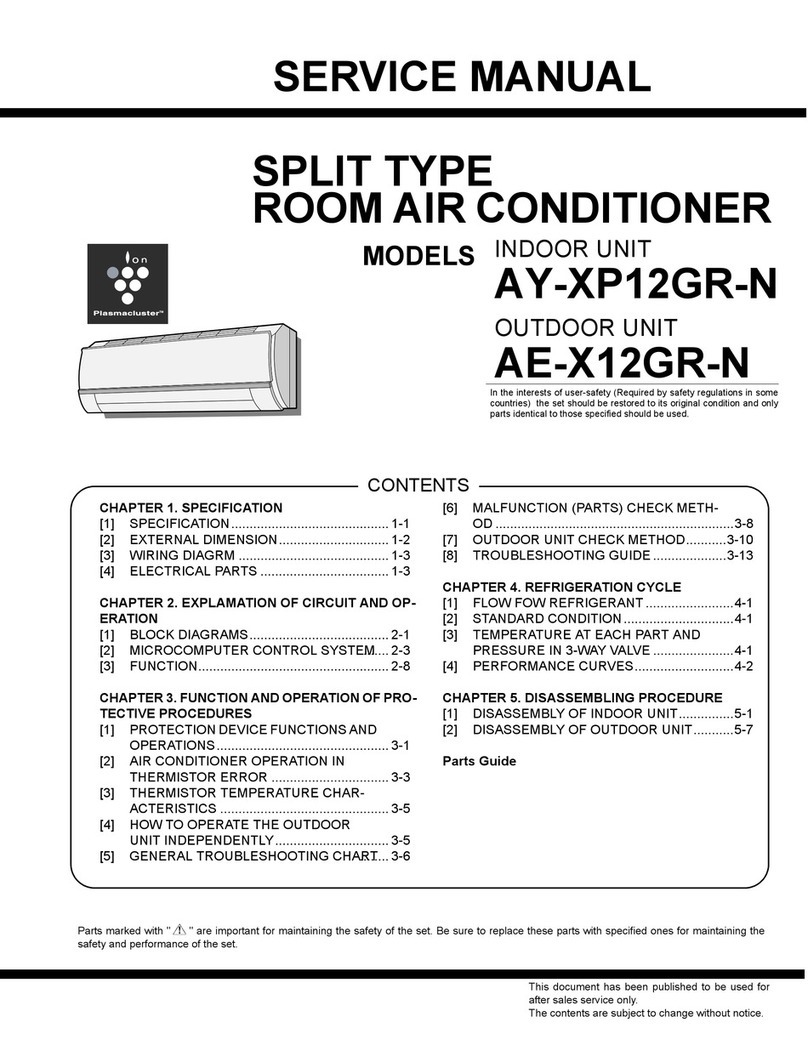SERVICE MANUAL
12PHR-N
SPLIT TYPE
AIR TO AIR HEAT PUMP
MODEL
CONTENTS
CHAPTER 1. PRODUCT SPECIFICATION
[1] SPECIFICATION............................................ 1-1
[2] EXTERNAL DIMENSION............................... 1-2
[3] WIRING DIAGRAM......................................... 1-3
[4] ELECTRICAL PARTS..................................... 1-4
CHAPTER 2. EXPLANATION OF CIRCUIT AND
OPERATION
[1] BLOCK DIAGRAMS....................................... 2-1
[2] MICROCOMPUTER CONTROL SYSTEM.... 2-3
[3] FUNCTION..................................................... 2-8
CHAPTER 3. FUNCTION AND OPERATION OF
PROTECTIVE PROCEDURES
[1] PROTECTION DEVICE FUNCTIONS AND OPER-
ATIONS................................................ 3-1
[2] AIR CONDITIONER OPERATION IN THERMIS-
TOR ERROR........................................... 3-2
[3] THERMISTOR TEMPERATURE CHARACTERIST-
ICS............................................................ 3-4
[4] HOW TO OPERATE THE OUTDOOR UNIT INDE-
PENDENTLY.......................................... 3-6
[5] GENERAL TROUBLESHOOTING CHART.... 3-6
[6]
MALFUNCTION (PARTS) CHECK METHOD
....... 3-7
[7] OUTDOOR UNIT CHECK METHOD.............. 3-9
[8] SELF-DIAGNOSIS FUNCTION..................... 3-11
[9] CHART FOR READING SELF-DIAGNOSIS RES-
ULT........................................................ 3-1
CHAPTER 4. REFRIGERATION CYCLE
[1] SCHEMATIC DIAGRAM................................ 4-1
[2] PERFORMANCE CURVES............................ 4-1
CHAPTER 5. DISASSEMBLING PROCEDURE
[1] INDOOR UNIT................................................ 5-1
[2] DISASSEMBLY OF OUTDOOR UNIT............ 5-5
CHAPTER 6. OPERATION MANUAL
CHAPTER 7. INSTALLATION MANUAL
Parts Guide
Parts marked with " !" are important for maintaining the safety of the set. Be sure to replace these parts with specied ones for maintaining the safety
and performance of the set.
This document has been published to be used for
after sales service only.
The contents are subject to change without notice.
12PHR-N
The interests of user-safety(Required by safety regulations in
some countries)the set should be restored to its original condition
and only parts identical to those specied should be used.
S530612XPHRN/C
12PHR-N_S530612PHRN.indd 1 2013/8/7 15:41:57






